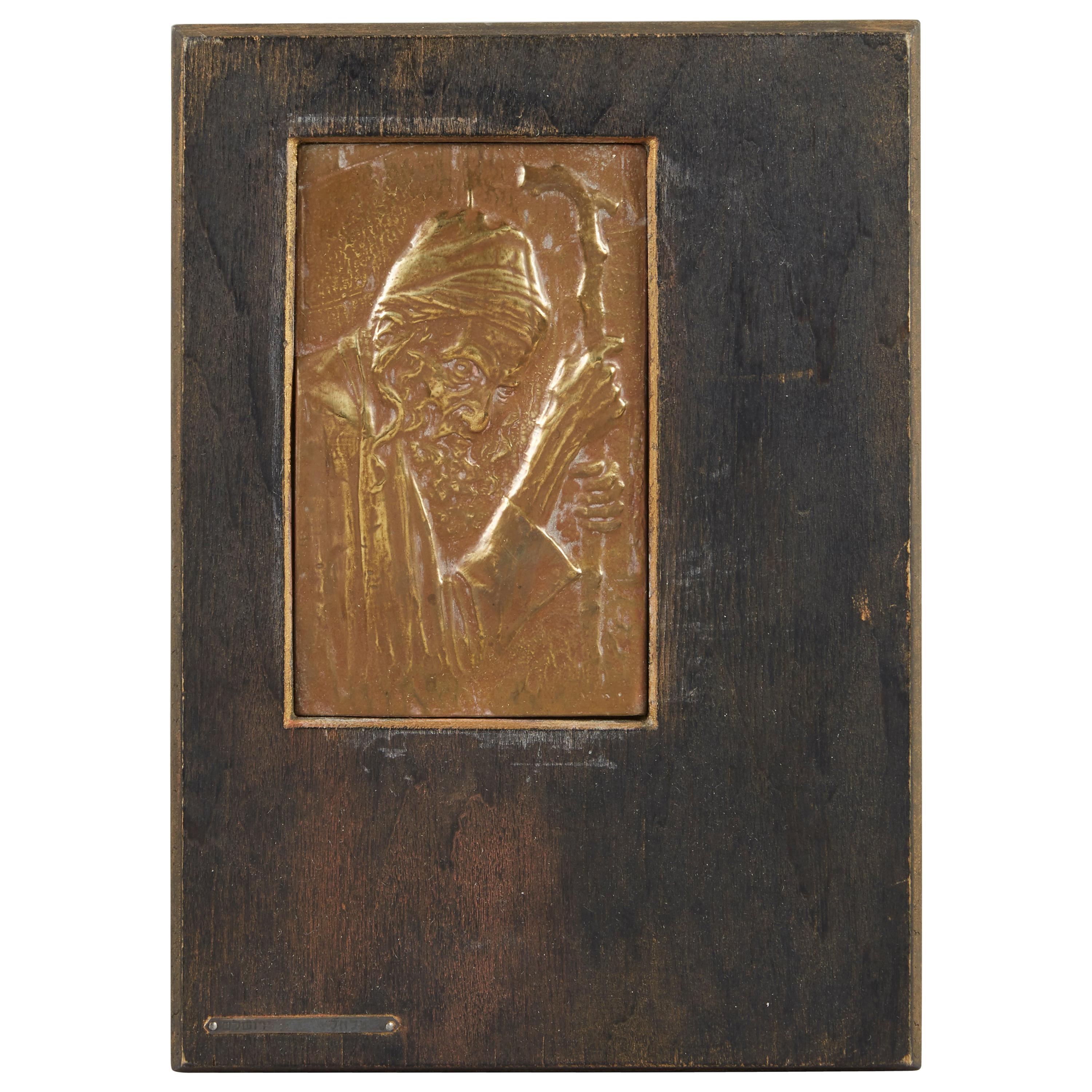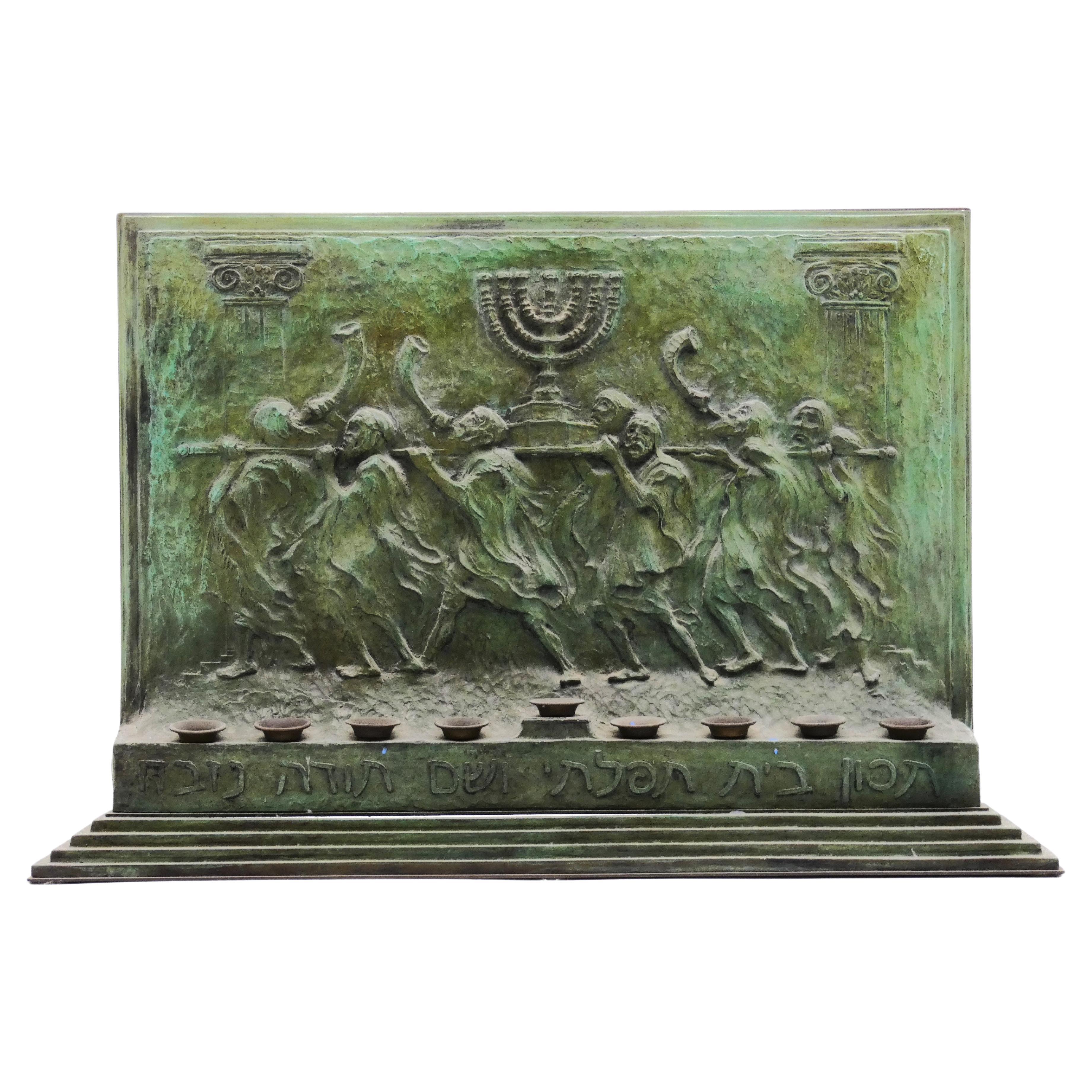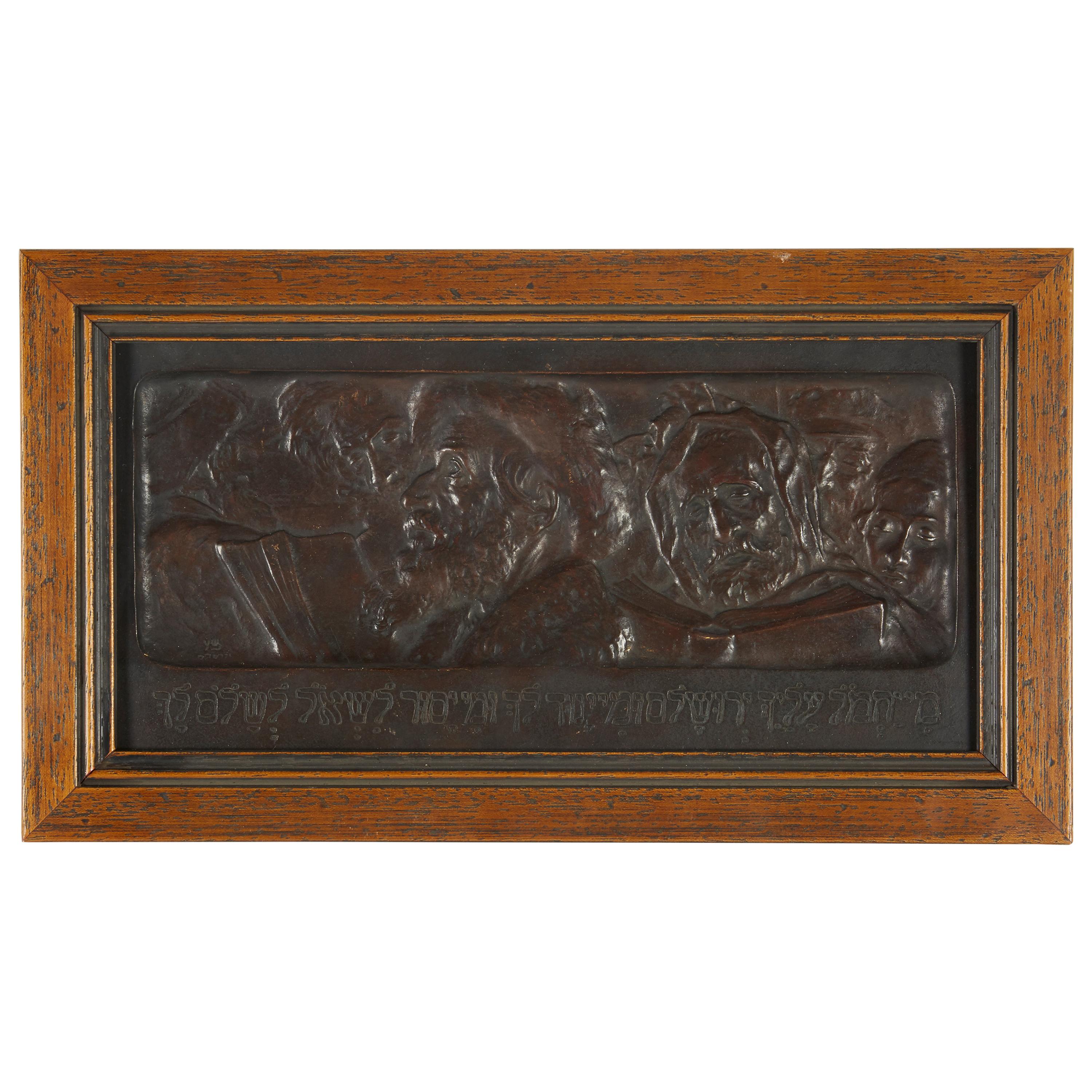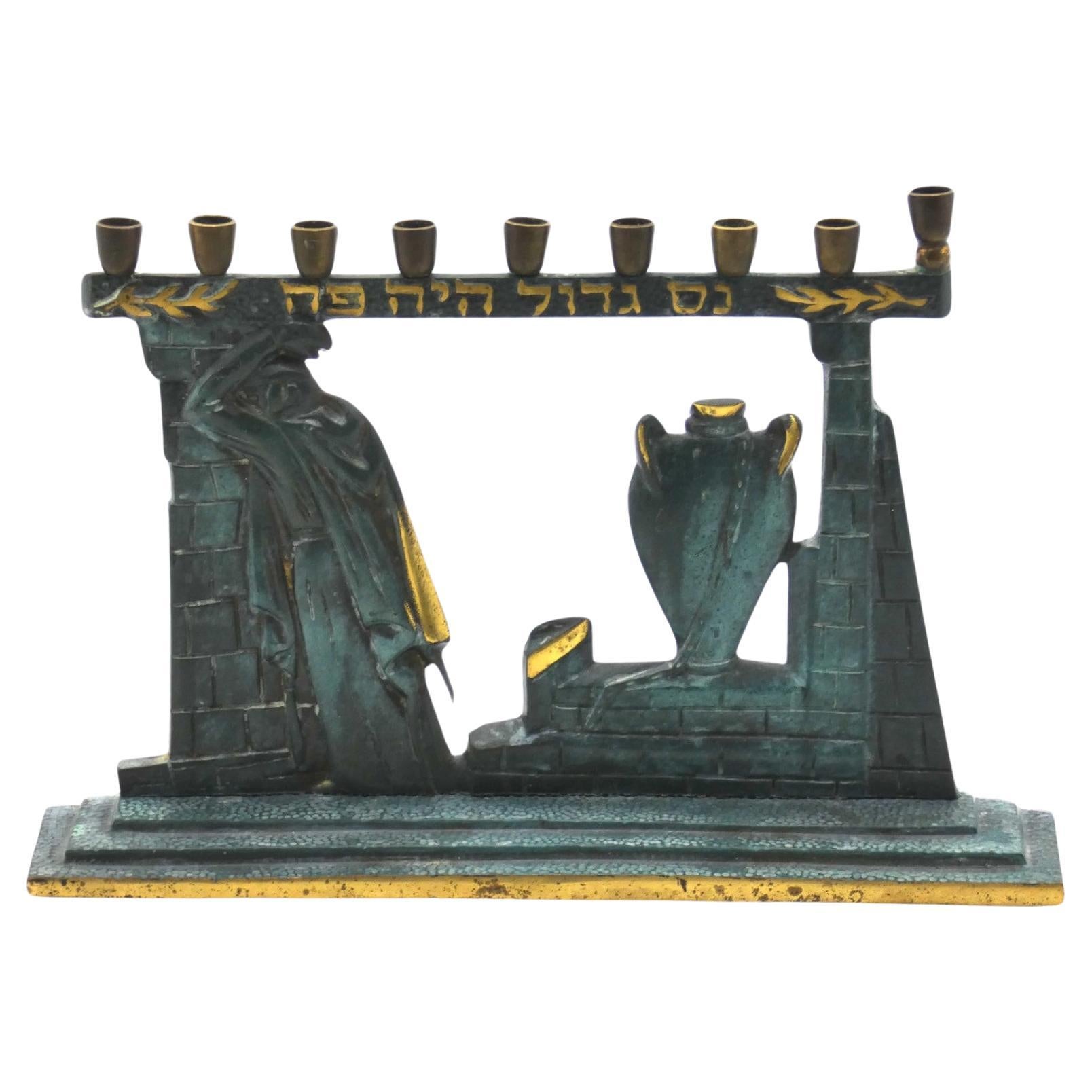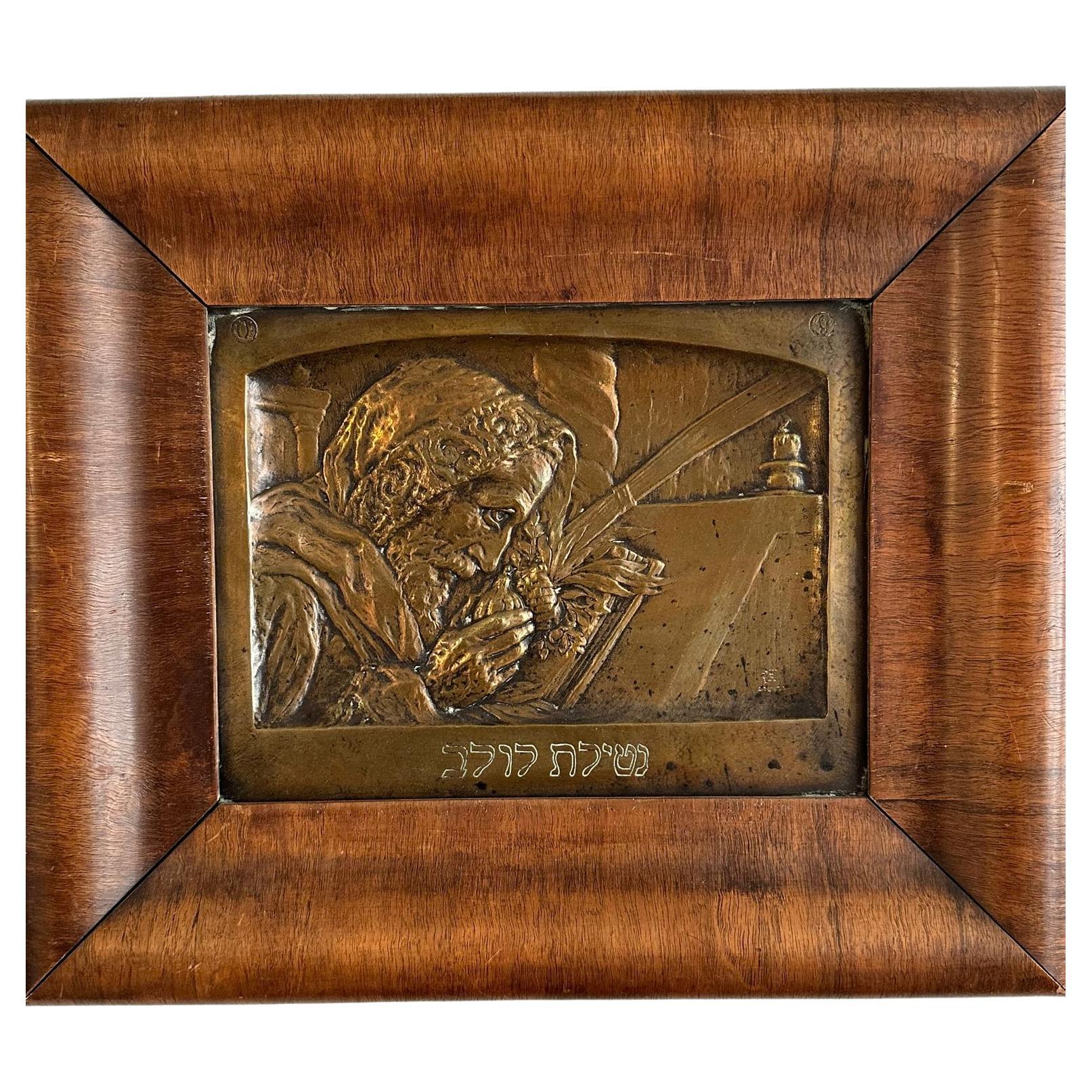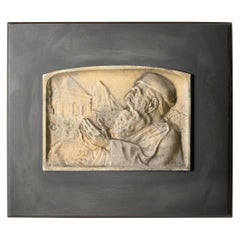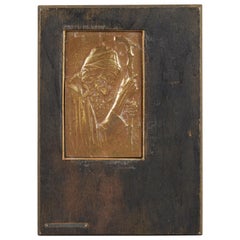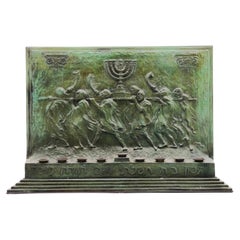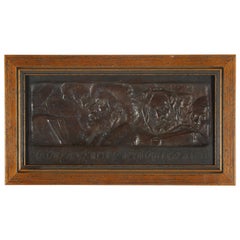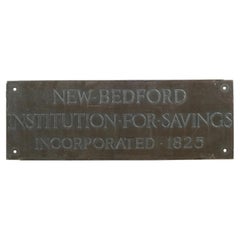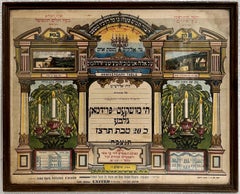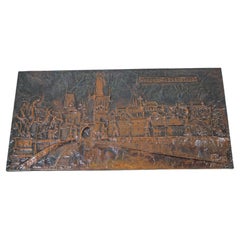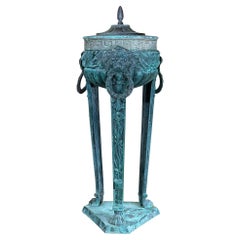Items Similar to Baltimore Zionist District Jewish National Fund, Building Bronze Sign Plaque
Want more images or videos?
Request additional images or videos from the seller
1 of 8
Baltimore Zionist District Jewish National Fund, Building Bronze Sign Plaque
$3,820
$4,77520% Off
£2,927.08
£3,658.8620% Off
€3,366.83
€4,208.5420% Off
CA$5,461.21
CA$6,826.5220% Off
A$5,931.87
A$7,414.8320% Off
CHF 3,140.43
CHF 3,925.5420% Off
MX$71,623.62
MX$89,529.5320% Off
NOK 39,205.05
NOK 49,006.3120% Off
SEK 37,140.56
SEK 46,425.7020% Off
DKK 25,139.86
DKK 31,424.8220% Off
About the Item
Early 20th century, heavy and massive bronze sign plaque for the Baltimore Zionist District
National Jewish Fund.
Cast in USA, circa 1900.
- Dimensions:Height: 5.91 in (15 cm)Width: 20.08 in (51 cm)Depth: 0.79 in (2 cm)
- Materials and Techniques:Bronze,Cast
- Place of Origin:
- Period:
- Date of Manufacture:circa 1900
- Condition:
- Seller Location:New York, NY
- Reference Number:1stDibs: LU5281219345101
About the Seller
5.0
Recognized Seller
These prestigious sellers are industry leaders and represent the highest echelon for item quality and design.
Established in 2006
1stDibs seller since 2020
141 sales on 1stDibs
Typical response time: 7 hours
- ShippingRetrieving quote...Shipping from: New York, NY
- Return Policy
Authenticity Guarantee
In the unlikely event there’s an issue with an item’s authenticity, contact us within 1 year for a full refund. DetailsMoney-Back Guarantee
If your item is not as described, is damaged in transit, or does not arrive, contact us within 7 days for a full refund. Details24-Hour Cancellation
You have a 24-hour grace period in which to reconsider your purchase, with no questions asked.Vetted Professional Sellers
Our world-class sellers must adhere to strict standards for service and quality, maintaining the integrity of our listings.Price-Match Guarantee
If you find that a seller listed the same item for a lower price elsewhere, we’ll match it.Trusted Global Delivery
Our best-in-class carrier network provides specialized shipping options worldwide, including custom delivery.More From This Seller
View AllJew at the Tomb of Zechariah-Bronze Plaque by Moshe Murro for Bezalel, Jerusalem
Located in New York, NY
Bronze plaque with a relife of a Jew with the Tomb of Zechariah in the background.
Made in Bezalel school, Jerusalem by Moshe Murro, circa 1915.
Signed: "Bezalel Jerusalem" in Hebr...
Category
Early 20th Century Israeli Decorative Art
Materials
Bronze
$1,940 Sale Price
20% Off
Early 20th Century Brass Plaque by Bezalel School Jerusalem
Located in New York, NY
Bezalel brass plaque depicting a Jewish elder next to the Western Wall, made in Jerusalem, circa 1920, bearing a small metal label engraved "Bezalel Jeru...
Category
Early 20th Century Israeli Decorative Art
Materials
Brass
$960 Sale Price
20% Off
A Monumental Bronze Hanukkah Lamp by Georges Weil, 1989
Located in New York, NY
This Hanukkah lamp sculpture is truly spectacular with its artistic realism and graphic detailing on its front main body.
Displayed at front is the scene of the Jewish people returning to Israel with Holy Menorah used in the ancient times of the temple.
Seven men are depicted in this scene dressed in flowing robes as tradition in those times with the Holy Menorah resting on a palanquin being carried on their shoulders as a number of them blow the shofar (trumpets) joyously.
In the background are two tall Greek columns on either side of the center scene with a sandy foreground.
The Greek columns and all the features of the main scene are a representation of the miracle that took place on Hanukkah;
During the times of the second temple Israel was under Greek rule, the Greeks had defiled the temple and took from it all the holy vessels used in the daily rituals of the temple.
The Maccabeans rose up and defeated the Greeks and returned the temple and all its vessels to their original intended holy purposes.
Inscribed under the row of eight flaring cups and the ascending stepped base are the words
"Restore my House of Prayer and there we will bring a Thanksgiving offering"
protuberantly displayed in Hebrew...
Category
Vintage 1980s American Candle Lamps
Materials
Bronze
Tisha B’Av, Bronze Plaque by Boris Schatz, Bezalel School Jerusalem
Located in New York, NY
Boris Schatz Bronze Plaque In high relief, expertly cast bronze. Depicting bearded men on the floor of the Synagogue reading kinnot (sad poems / elegies),...
Category
Early 20th Century Israeli Decorative Art
Materials
Bronze
$6,920 Sale Price
20% Off
A Brass Hanukkah Lamp Israel Circa 1950
Located in New York, NY
An Artistic Brass Hanukkah Lamp made in Israel circa 1950 reflects the cultural revival of the Jewish people living in Israel during this era.
The year 1950 places this Hanukkah lam...
Category
Mid-20th Century Israeli Candle Lamps
Materials
Brass
$2,640 Sale Price
20% Off
Early 20th Century "Netilat Lulav" Bronze Plaque by Boris Schatz, Bezalel
Located in New York, NY
Massive bronze plaque depicting the act of "Netilat Lulav" that takes place during the Jewish holiday of Sukkot. The plaque was made and signed by Boris Schatz, who was part of the B...
Category
Early 20th Century Israeli Neoclassical Wall-mounted Sculptures
Materials
Bronze
$6,800 Sale Price
20% Off
You May Also Like
1825 Bronze Plaque from New Bedford Institution for Savings Incorporated
Located in New York, NY
1825 bronze bank plaque with raised lettering and original dark patina. This can be seen at our 400 Gilligan St location in Scranton, PA.
Category
Antique 1820s American Architectural Elements
Materials
Bronze
Rare Palestine Antique Hebrew Judaica Yahrzeit Synagogue Sign Memorial Plaque
Located in Surfside, FL
Circa 1890-1920. This Neoclassical, Judaic, Egyptian revival, Orientalist Mizrach sign, was produced in British Mandate Palestine by the chromolithograph process at the beginning of the 20th century. It pictures vignettes of holy places. with a hand written memorial. It was for the Tzedakah charity fund for the century-old institutions in Jerusalem: The great "Torah Center Etz Chaim"; a Free Kitchen for poor children and orphans; the famous Bikur Cholim Hospital with its dispensaries and clinics and the only Home for Incurable Invalids in Eretz Israel. They also worked with Arthur Szyk and Alfred Salzmann.. The A.L. Monsohn Lithographic Press (Monzon Press, Monson Press, דפוס אבן א"ל מאנזאהן, דפוס מונזון) was established in Jerusalem in 1892 by Abraham-Leib (or Avrom-Leyb) Monsohn II (Jerusalem, c.1871-1930) and his brother Moshe-Mordechai (Meyshe-Mordkhe). Sponsored by members of the Hamburger family, the brothers had been sent to Frankfurt, Germany in 1890 to study lithography. Upon returning to Jerusalem in 1892 with a hand press, they established the A.L. Monsohn Lithographic Press in the Old City of Jerusalem. According to the Information Center for Israeli Art A.L. Monsohn "created complex decorations for documents and oriental calendars that combined the tradition of Jewish art with modern printing techniques such as photographic lithography, raised printing and gilding."
The founders of the Monsohn press produced Jewish-themed color postcards, greeting cards, Jewish National Fund stamps, and maps documenting the evolution of the Jewish settlement in Eretz Israel in the nineteenth-twentieth centuries; religious material such as decorative plaques for synagogues, portraits of Old Yishuv rabbis such as Shmuel Salant, Mizrah posters indicating the direction of prayer for synagogues, memorial posters, and posters for Sukkot booths; color frontispieces for books such as Pentateuch volumes and the early song collections of Abraham Zvi Idelsohn (e.g., Shire Zion, Jerusalem 1908); artistic wedding invitations; and labels, packaging and advertisements for the pioneering entrepreneurs of Eretz Israel. The texts appearing in the Monsohn products were in several languages: Hebrew, Arabic, Yiddish, English, German (e.g., a c1920 trilingual Hebrew-English-Arabic "Malaria Danger" broadside warning the public of mosquitoes spreading malaria). Many of the brilliantly colored postcards and maps can be seen online as can the artistic invitations to his children's weddings which Monsohn published in the Jerusalem Hebrew press.
For years, the Monsohn (later, Monson/Monzon) Press was considered the best and most innovative in the country—pioneering in such techniques as gold-embossing and offset printing, among others. Early items for tourists included collections of Flowers of the Holy Land (c. 1910–1918)—pressed local flowers accompanied by scenes from the Eretz Israel countryside and relevant verses from the Bible, edited by Jsac Chagise (or Itzhak Haggis), an immigrant from Vitebsk, and bound in carved olive wood boards. Shortly after World War I Monsohn (now spelled מונזון) used zincography to produce the prints included in the Hebrew Gannenu educational booklets for young children illustrated by Ze'ev Raban of the Bezalel Academy of Art and Design and printed in Jerusalem by Hayim Refael Hakohen (vol. 1, 1919; vols. 2–3, 1920). In 1934 Monsohn moved into the new, western part of Jerusalem, in a shop with four presses and 30 workers, including Abraham-Leib's sons, David, Yosef, Moshe and Shimon, and his daughter Raytse's husband, Abraham Barmacz. The concern did business with all sectors of the city's population, including Arabs, for whom they printed in Arabic. Among their clients were members of the Ginio, Havilio, and Elite families, and Shemen, Dubek, and other renowned national brands, manufacturing products such as wine, candies, oil, and cigarettes. They also printed movie and travel posters, and government posters, postcards and documents, hotel luggage labels...
Category
Early 20th Century Aesthetic Movement More Art
Materials
Lithograph
Mid-Century Wall Sculpture Copper Metal, 1972
Located in Praha, CZ
Made in Czechoslovakia
Made of copper, wood
Original condition.
Category
Vintage 1970s Czech Mid-Century Modern Wall-mounted Sculptures
Materials
Copper
$455 Sale Price
20% Off
19th Century Architectural Bronze Element
Located in Delray Beach, FL
Exceptional antique French bronze architectural element used as decorative object of art. Beautiful oxidized green-turquoise patina, lion heads and vines Greek key motifs, one of a k...
Category
Antique 19th Century French Mounted Objects
Materials
Bronze
19th Century Cast Bronze Decorative Masonry Plaque
Located in Dallas, TX
19th Century Cast Bronze Decorative Masonry Plaque was designed to be inset with a masonry wall, surround or framework to add a timeless decorative touch. Depicting a Greco-Romanesque urn bursting with flowers, it was cast from solid bronze, it is a great choice for a kitchen backsplash...
Category
Antique Late 19th Century French Neoclassical Revival Architectural Elem...
Materials
Bronze
$784 Sale Price
20% Off
"Honoring Henry Agard Wallace", Art Deco Bronze by Chambellan for B'nai B'rith
By René Paul Chambellan
Located in Philadelphia, PA
Highly important both artistically and historically, this high style Art Deco bronze panel, full of symbolism and patriotic fervor, was commissio...
Category
Vintage 1940s American Art Deco Wall-mounted Sculptures
Materials
Bronze
More Ways To Browse
Antique Buildings
Jewish Antique
Jewish Furniture
Jewish Gold
Garden Plaque
Baltimore Antique Furniture
Jewish National Fund
Victorian Architecture Elements
Architectural Decorative Elements
Midcentury Door Pulls
Antique Gargoyle
Antique Gargoyles
Antique French Carved Wood Elements
Midcentury Modern Door Pulls
India Architecture
Art Deco Tile
Italian Stone Antique
Carved Architectural Panels

